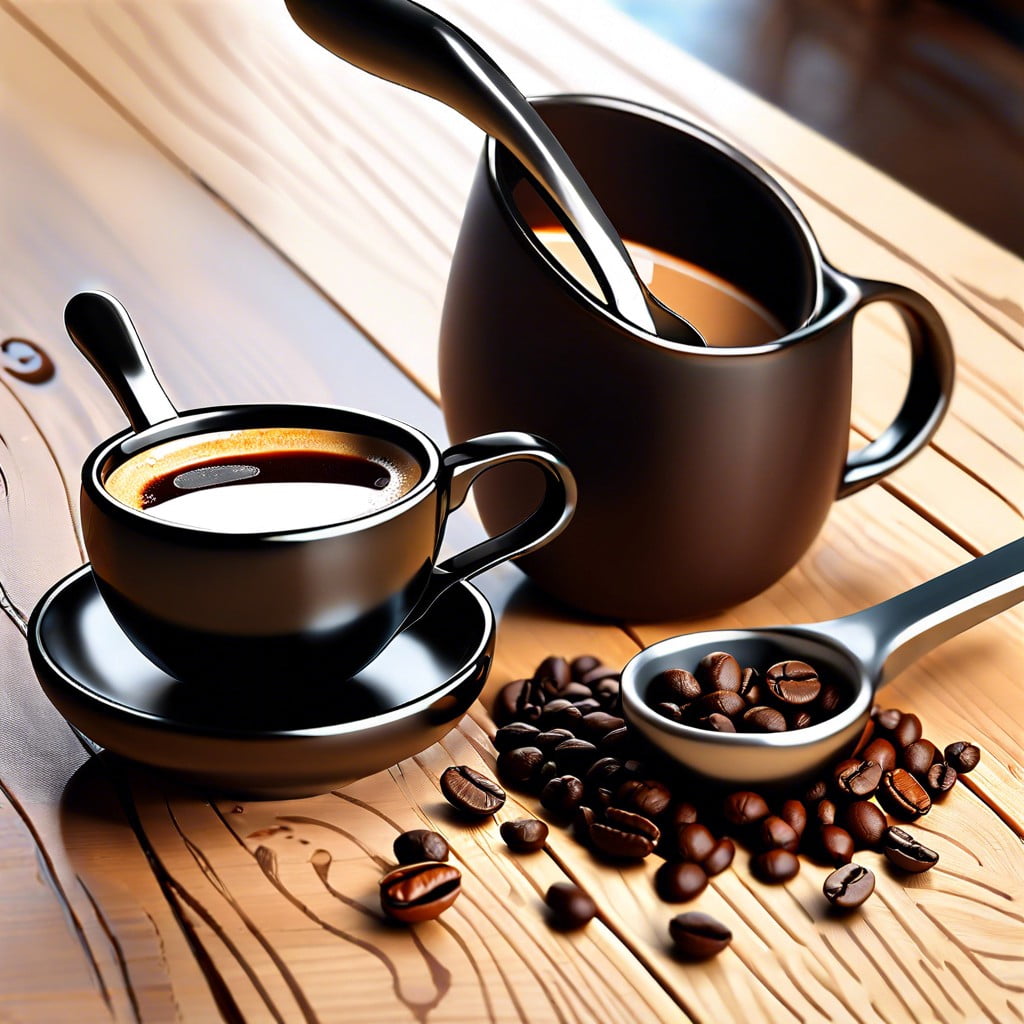Learn the ideal amount of coffee scoops per cup to perfect your brew.
The Golden Ratio

Diving straight into the meat of the matter, the Golden Ratio is a celebrated guideline in the coffee brewing process, suggesting a proportionate relationship between coffee and water. Typically, for every six ounces of water, you’ll want about 2 tablespoons of ground coffee. This is a starting point though, not a decree. Your flavor frontier may nudge you to adjust the scales a smidge.
These ratios are crucial; too much coffee and you’re in bitter town, too little and you’re sipping on a mug of hot disappointment. Balance is key. Coffee aficionados are like tightrope walkers, fine-tuning their every move to achieve perfect harmony in a cup.
Keep in mind, the size of your scoop could vary from the standard tablespoon. We’re not baking a cake here; precision isn’t the law of the land. A dash of common sense mixed with a sprinkle of preference will certainly brew up success.
Tips for Picking Your Preferred Coffee Strength
Experimentation is your friend when finding the sweet spot for your taste buds. Start with the standard one to two tablespoons of ground coffee for every six ounces of water and adjust according to your preference. If the brew tastes too strong, reduce the coffee scoops; if it’s too weak, add more.
Pay close attention to the roast level of your beans. Light roasts can often have more complex, subtle flavors, while darker roasts typically have a bolder, straightforward profile. The intensity of your brew might be influenced by the roast as much as by the amount of coffee you use.
Consider using a scale for consistent results. Measuring your coffee by weight rather than by volume can lead to a more consistent strength and flavor, as a scoop can vary based on the grind size and bean type.
Remember, personal preference trumps all. There’s no one-size-fits-all solution. Tinkering with the ratio of coffee-to-water can lead to a more enjoyable cup that’s tailored to your individual taste. Keep it simple, enjoy the process, and trust your palate.
Considering Grind Styles and Coffee Ratios for Espresso Machines, French Press Makers, and K-Cups
Different brewing methods demand unique grind sizes and coffee ratios. For espresso, you want a fine grind and a potent, roughly 1:2 coffee-to-water ratio to achieve that creamy, concentrated shot. Picture an intense, flavorful espresso balancing strength and aroma with every sip.
Switch gears to the French Press, where a coarser grind is king. Aim for 1:15. This gentler approach allows for a longer steep time, coaxing out coffee’s rich flavors without a bitter aftertaste.
K-Cups, on the other hand, simplify the process. No scoops necessary — just pop in a pod. Be aware, these convenient cups have a fixed ratio, which may not suit every palate’s desire for customization and gusto.
Consider your preferred brewing method and adjust your grind and ratio to make magic in a mug.
Key Takeaways On the Coffee to Water Ratio
Striking the right balance between coffee and water can make or break your brew. Here’s succinct guidance to remember:
- A standard measure for a satisfying cup is two tablespoons of coffee to six ounces of water.
- Adjustments are key: more coffee for a stronger cup, less for milder tastes.
- Consistency is crucial. Use the same scoop and level it each time for predictable results.
- Stay flexible: the perfect ratio depends on bean type, roast, grind size, and brewing method.
- Experimentation is your friend. Fine-tune ratios over several brews to find your ideal cup.
Keep in mind, achieving the perfect cup is part science, part art. Trust your taste buds and refine as you go.
The Importance of Water Quality
Water acts as the stage for your coffee performance, affecting its final flavor and quality. A cup of coffee is roughly 98% water, making the liquid’s purity and taste crucial to your brew. Tap water containing high levels of chlorine or impurities can taint your cup, leaving you with a brew that’s more swimming pool than espresso bar.
Soft water, often low in minerals, can result in a flat, underwhelming cup, potentially failing to extract the full symphony of flavors from the beans. On the flip side, hard water can bring a different set of challenges, occasionally leading to mineral buildup in machines and sometimes overpowering the coffee’s natural flavor profile with a harsh, metallic edge.
For a harmonious balance, use filtered or bottled water with a moderate mineral content to achieve the perfect harmony between water and coffee grounds. If you treasure your coffee moments, consider investing in a water filter – your taste buds will thank you as your coffee’s true notes hit center stage with each sip.